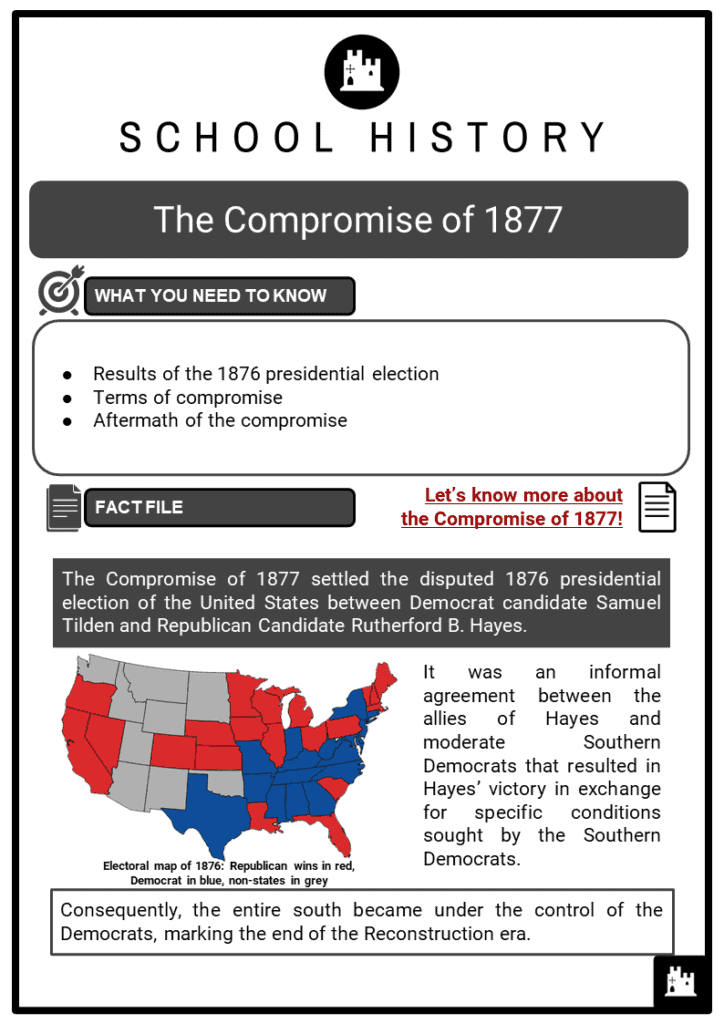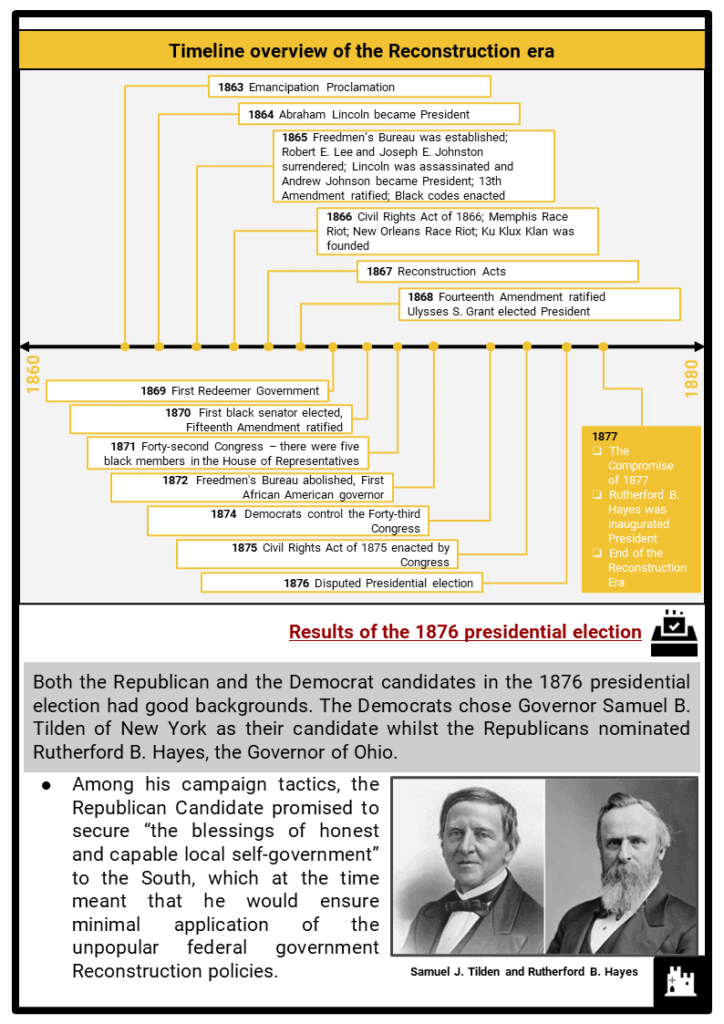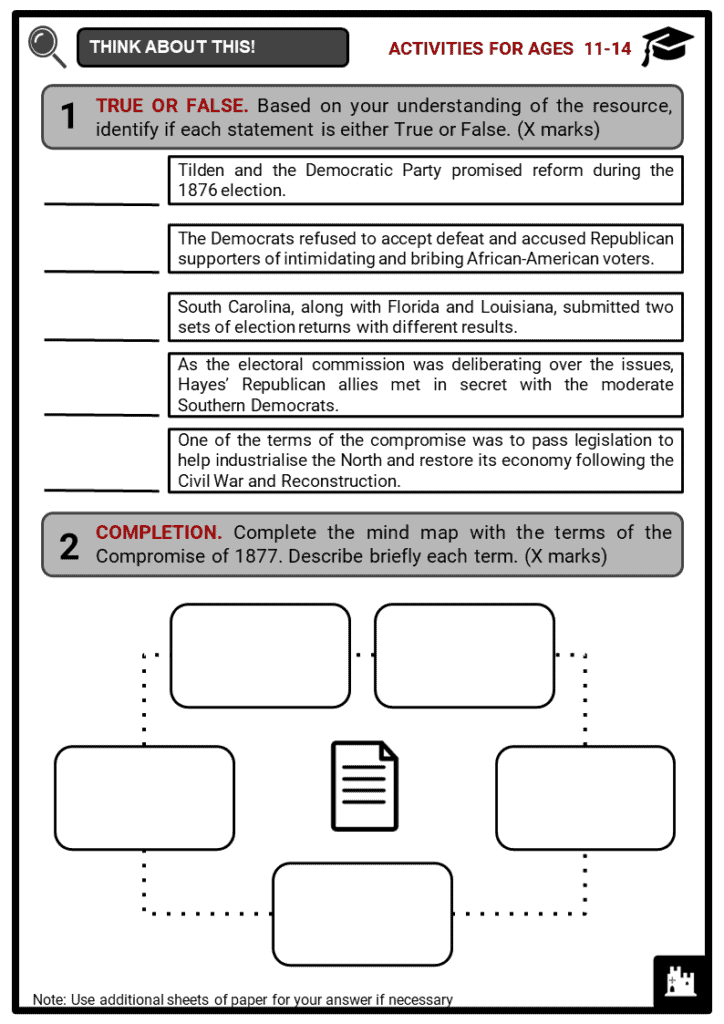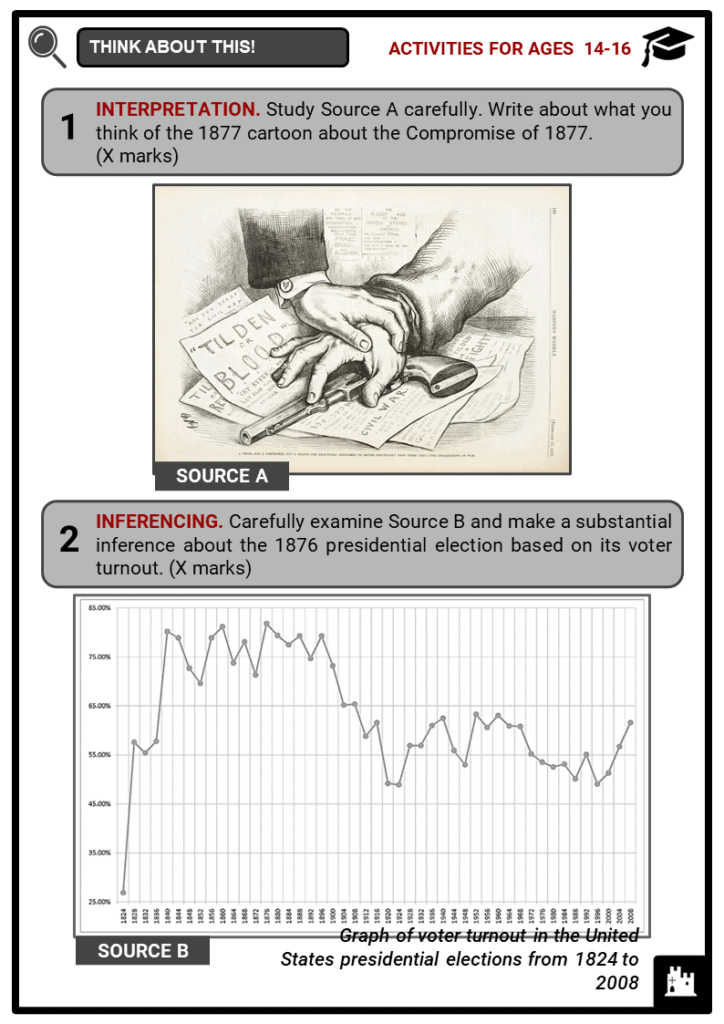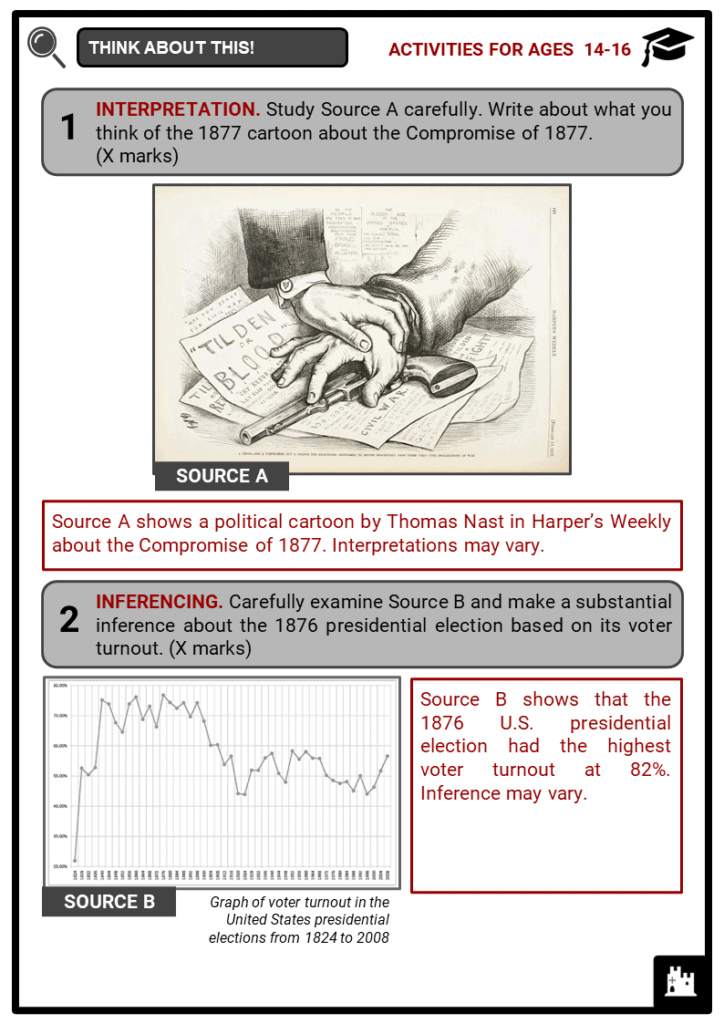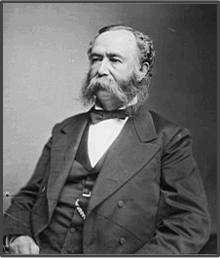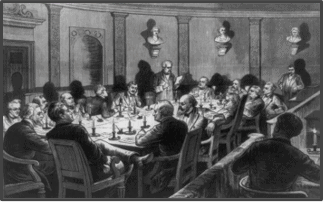Download The Compromise of 1877 Worksheets
Do you want to save dozens of hours in time? Get your evenings and weekends back? Be able to teach The Compromise of 1877 to your students?
Our worksheet bundle includes a fact file and printable worksheets and student activities. Perfect for both the classroom and homeschooling!
Table of Contents
Add a header to begin generating the table of contents
Summary
- Results of the 1876 presidential election
- Terms of compromise
- Aftermath of the compromise
Key Facts And Information
Let’s know more about the Compromise of 1877!
- The Compromise of 1877 settled the disputed 1876 presidential election of the United States between Democrat candidate Samuel Tilden and Republican Candidate Rutherford B. Hayes.
- It was an informal agreement between the allies of Hayes and moderate Southern Democrats that resulted in Hayes’ victory in exchange for specific conditions sought by the Southern Democrats.
- Consequently, the entire south became under the control of the Democrats, marking the end of the Reconstruction era.
Results of the 1876 presidential election
- Both the Republican and the Democrat candidates in the 1876 presidential election had good backgrounds. The Democrats chose Governor Samuel B. Tilden of New York as their candidate whilst the Republicans nominated Rutherford B. Hayes, the Governor of Ohio.
- Among his campaign tactics, the Republican Candidate promised to secure “the blessings of honest and capable local self-government” to the South, which at the time meant that he would ensure minimal application of the unpopular federal government Reconstruction policies.
- On the other hand, Tilden and the Democratic Party promised reform, as corruption was a major issue in the administration.
- On Election Day the Democrats appeared to be on the winning side, securing the swing votes of Connecticut, Indiana, New York and New Jersey.
- At midnight Tilden had 184 of the 185 electoral votes he needed to win and was leading the popular vote by 250,000.
- The Republicans refused to accept defeat and accused Democratic supporters of intimidating and bribing African-American voters to prevent them from voting in three southern states, namely Florida, Louisiana and South Carolina.
- As of 1876, these were the only remaining states in the South with Republican governments.
- The election in South Carolina was bloody as supporters of the Democratic gubernatorial candidate Wade Hampton, a former Confederate general, had used violence and intimidation to confront the African-American voting majority.
- A clash between black militia and armed whites in Hamburg in July ended in the death of five militiamen after their surrender.
- At Camboy (near Charleston) six white men were killed when armed black people opened fire in a political meeting.
- With both sides accusing each other of electoral fraud, South Carolina, along with Florida and Louisiana, submitted two sets of election returns with different results.
- Meanwhile, in Oregon, the state’s Democratic governor replaced a Republican elector with a Democrat (alleging that the Republican had been ineligible), thus throwing Hayes’ victory in that state into question as well.
- Congress set up an electoral commission in January 1877 consisting of five U.S. representatives, five senators and five Supreme Court justices to resolve the dispute.
- The commission’s members included seven Democrats, seven Republicans and one independent, Justice David Davis.
- When Davis refused to serve, the moderate Republican Justice Joseph Bradley was chosen to replace him.
Terms of compromise
- As the commission was deliberating over the issues, Hayes’ Republican allies met in secret with the moderate Southern Democrats.
- In February, during a meeting in Washington’s Wormley Hotel, the Democrats agreed to accept Hayes’ victory and to respect the civil and political rights of African Americans on certain conditions.
- The compromise essentially declared that Southern Democrats would not block Hayes’ victory, but requested certain demands that Republicans had to deliver.
- The terms of the compromise generally pointed out the following:
- The removal of all remaining U.S. military forces from the former Confederate states. At the time, U.S. troops remained only in Louisiana, South Carolina, and Florida, but the Compromise completed their withdrawal from the region.
- The appointment of at least one Southern Democrat to Hayes' cabinet.
- The construction of another transcontinental railroad using the Texas and Pacific railroad in the South.
- Legislation to help industrialise the South and restore its economy following the Civil War and Reconstruction.
- The right to deal with black people without northern interference.
Aftermath of the compromise
- Upon agreeing to the terms, the Congressional Commission voted 8:7 along party lines, awarding all the disputed electoral votes to Hayes, declaring him the winner with 185, against Tilden’s 184. Hayes was peacefully inaugurated.
- Results of the terms of compromise:
- Hayes appointed David Key from Tennessee as postmaster general.
- He further withdrew federal government troops from Louisiana and South Carolina. As a result, Florida, Louisiana and South Carolina became Democratic once again, allowing Democrat control over the entire South.
- Hayes never made good on his promise to provide a land grant for the Texas and Pacific railroad.
- By the 1870s, support for the reconstruction policies had significantly reduced and white supremacy was restored.
- A series of Supreme Court actions also challenged the reconstruction laws.
- The Federal government also failed to observe or enforce the Fourteenth and Fifteenth Amendments guaranteeing African American citizenship and the right to vote.
- The Reconstruction period came to an end and the Democrats’ policy was to not interfere with state affairs.
- Thus they never honoured their promise to ensure that the civil and political rights of the black people were protected.
- From the 1870s onwards, the southern legislatures passed a series of segregation laws called the Jim Crows laws.
Image sources:

